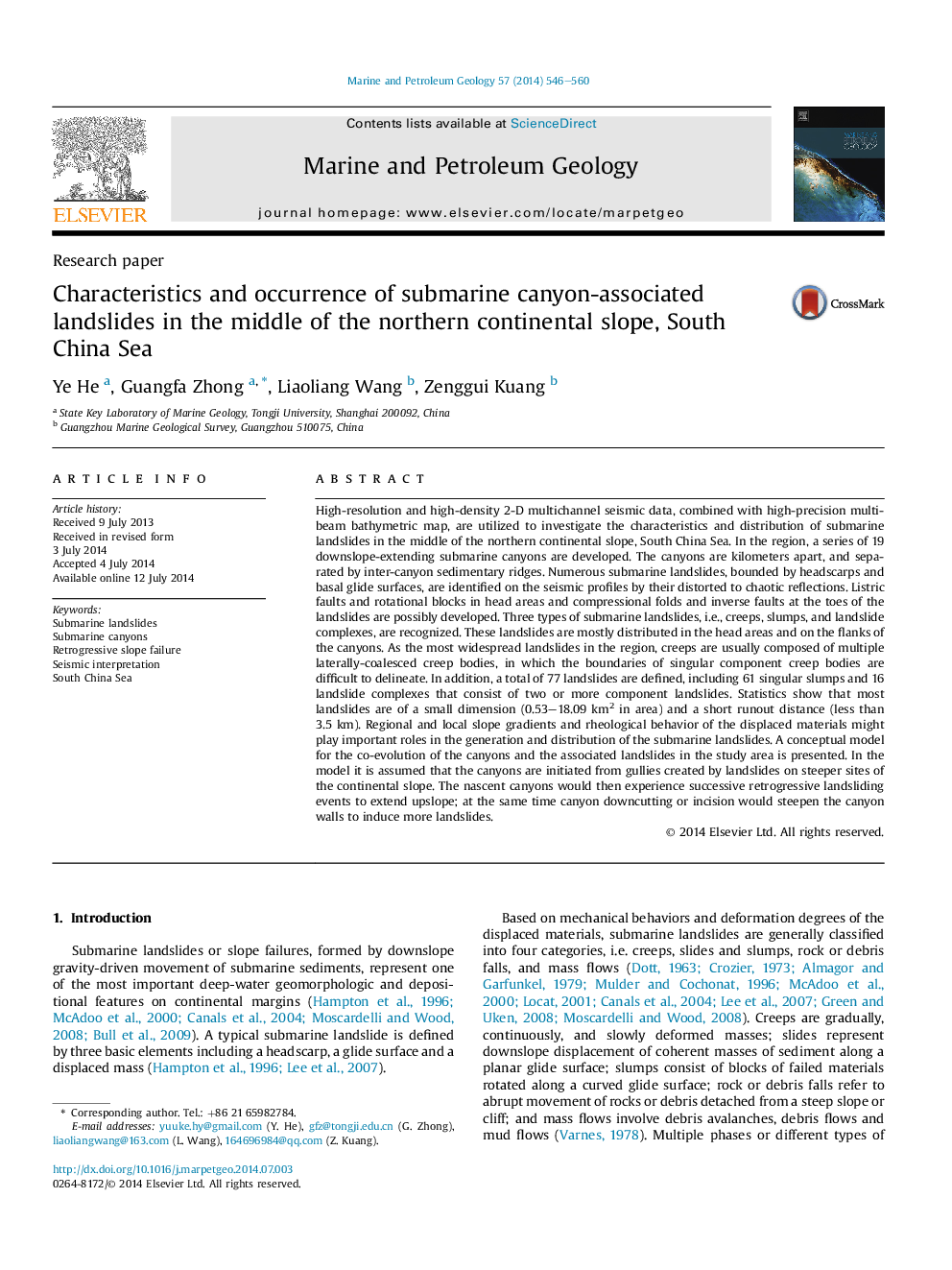| Article ID | Journal | Published Year | Pages | File Type |
|---|---|---|---|---|
| 6435399 | Marine and Petroleum Geology | 2014 | 15 Pages |
â¢Document canyon-related submarine landslides.â¢Discuss controls.â¢Propose origin model.
High-resolution and high-density 2-D multichannel seismic data, combined with high-precision multibeam bathymetric map, are utilized to investigate the characteristics and distribution of submarine landslides in the middle of the northern continental slope, South China Sea. In the region, a series of 19 downslope-extending submarine canyons are developed. The canyons are kilometers apart, and separated by inter-canyon sedimentary ridges. Numerous submarine landslides, bounded by headscarps and basal glide surfaces, are identified on the seismic profiles by their distorted to chaotic reflections. Listric faults and rotational blocks in head areas and compressional folds and inverse faults at the toes of the landslides are possibly developed. Three types of submarine landslides, i.e., creeps, slumps, and landslide complexes, are recognized. These landslides are mostly distributed in the head areas and on the flanks of the canyons. As the most widespread landslides in the region, creeps are usually composed of multiple laterally-coalesced creep bodies, in which the boundaries of singular component creep bodies are difficult to delineate. In addition, a total of 77 landslides are defined, including 61 singular slumps and 16 landslide complexes that consist of two or more component landslides. Statistics show that most landslides are of a small dimension (0.53-18.09 km² in area) and a short runout distance (less than 3.5 km). Regional and local slope gradients and rheological behavior of the displaced materials might play important roles in the generation and distribution of the submarine landslides. A conceptual model for the co-evolution of the canyons and the associated landslides in the study area is presented. In the model it is assumed that the canyons are initiated from gullies created by landslides on steeper sites of the continental slope. The nascent canyons would then experience successive retrogressive landsliding events to extend upslope; at the same time canyon downcutting or incision would steepen the canyon walls to induce more landslides.
